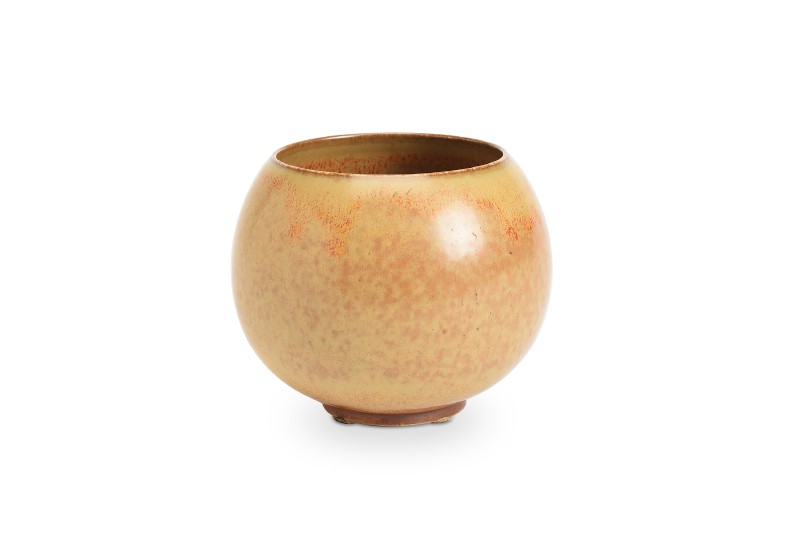1929 gründeten Natalie Krebs und Gunnar Nylund, beide ehemals bei Bing & Grøndahl tätig, die Firma Saxbo Stentoj. Nylund verließ das Unternehmen nur ein Jahr später wieder. Als künstlerische Leiterin wurde 1932 Eva Stæhr-Nielsen eingestellt, die vor allem für klare, einfache Formen bekannt wurde. Das Unternehmen spezialisierte sich schnell auf solche schlichten, leicht in Serie produzierbaren Formen - stand dabei aber immer für hohe technische und künstlerische Qualität. Dies zeigt sich auch in der aus einer schlichten Kugelform heraus gebildeten Kumme, an der alle drei genannten Personen beteiligt waren.
Schenkung Marion & Jörg Schwandt, Berlin, 1997
1997.136
en

